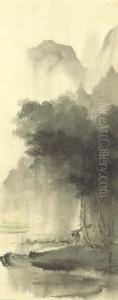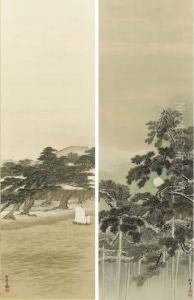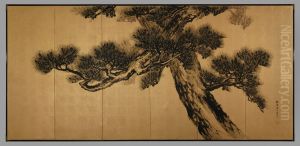Suzuki Shonen Paintings
Suzuki Shōnen was a prominent Japanese painter born in Kyoto in 1848. He belonged to the Maruyama-Shijō school of painting, which is known for its blend of traditional Japanese techniques and a more realistic, nature-inspired approach that emerged in the late 18th century. Throughout his life, Shōnen was deeply influenced by the works of earlier masters like Maruyama Ōkyo and Ōtagaki Rengetsu, drawing from their emphasis on the beauty of the natural world and the incorporation of Western painting techniques and perspectives.
Shōnen's body of work is characterized by its diverse range of subjects, including landscapes, birds-and-flowers paintings (kacho-e), and portraits, demonstrating his versatility and mastery in both ink and color. His paintings are noted for their delicate detail, vibrant colors, and the ability to convey the spirit of his subjects. Shōnen also had a particular talent for capturing the changing seasons and the ephemeral beauty of nature, which resonated with the aesthetic sensibilities of his time.
In addition to his painting career, Suzuki Shōnen played a significant role in the Kyoto art scene as an educator and mentor to younger artists. He was a key figure in the establishment of art institutions that aimed to preserve traditional Japanese painting techniques while also encouraging innovation. His contributions helped to foster a new generation of artists who would continue to explore the evolving landscape of Japanese art.
Shōnen's work was widely recognized during his lifetime, and he received several honors from the Japanese government. Despite the modernization of Japan during the Meiji period and the increasing influence of Western art, he remained committed to the traditions of Japanese painting, while still being open to new ideas and techniques. Suzuki Shōnen passed away in 1918, leaving behind a legacy that continues to influence Japanese art. His works are preserved in several major museums in Japan and around the world, where they continue to be admired for their beauty and historical significance.














